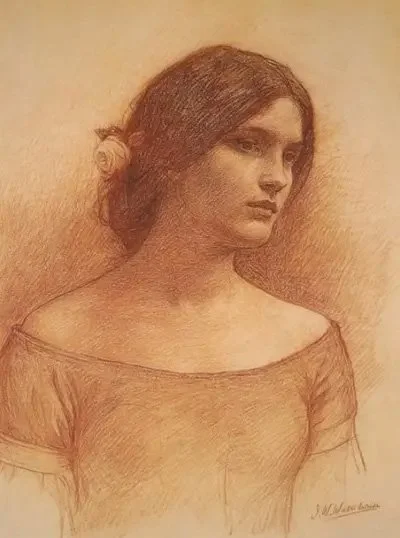I have always been quite a lover of J.W. Waterhouse work, those soft eerie figures in heavily textured environments affected me a lot when I was growing as an artist; and of course the mysteries of the mythical subjects were inflaming my imagination.
While you can find some books with a catalog of his work and his life, I couldn’t find much on his technique and process of painting. So I thought, here we go, let’s get on an adventure and try to solve some of those questions. I will try whenever I can to differentiate my own theories from the factual proofs that can be found in historical letters and research.
Waterhouse studied at the Royal Academy in London after having paint under his father, also a painter. From there we can deduce that even if he entered the school as a sculptor (which must have helped a lot when he painted), must have learn how to paint from the « academic » method dispensed then, a method similar to the “French Academic” method of this century. He probably used a more and more personal method as he became more experienced, has most painter do.



















